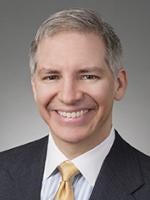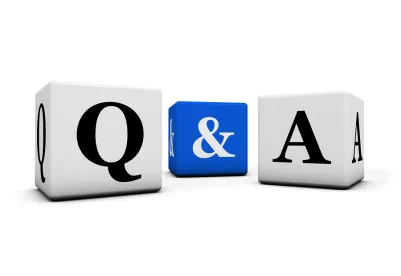On October 19, the Internal Revenue Service (IRS) and US Department of the Treasury released the first set of proposed regulations under Internal Revenue Code Subchapter Z—Opportunity Zones (Proposed Regulations).1 On the same day, the IRS also issued Revenue Ruling 2018-29 (Revenue Ruling) relating to the application of the Opportunity Zone tax incentives to improvements of real property.
Through the Qualified Opportunity Zone (QOZ) program, investors are able to inject capital into low-income communities and promote long-term economic growth in designated QOZs through a variety of investment vehicles. Investors also may receive significant tax benefits that include (1) deferral of tax for capital gains from an unrelated investment that is invested in a Qualified Opportunity Fund (QOF), (2) elimination of up to 15 percent of the tax on the capital gains that are invested in a QOF (10 percent if the investment is held for more than five years and 15 percent if the investment is held for more than seven years), and (3) potential elimination of tax on the appreciation on a QOZ investment upon exiting a QOF, if the QOF investment is held for more than 10 years.
The Proposed Regulations clarify several questions that have been asked frequently by commentators and our clients, which we analyze below. This alert assumes that the reader has a basic understanding of the Opportunity Zone rules enacted by Congress. The full text of the Proposed Regulations is available here. Please contact one of the members of Katten's Opportunity Zone Working Group for further information.
- Can a QOF be a limited liability company?
In the statute, a QOF is defined as "any investment vehicle organized as a corporation or partnership for the purpose of investment in Qualified Opportunity Zone Property (QOZ Property)." The Proposed Regulations clarify that any entity that is classified as a corporation or a partnership for federal income tax purposes and that is created or organized in the 50 states, the District of Columbia or a US Possession could qualify as a QOF, provided that other requirements are satisfied. If the entity is created or organized in a US Possession, it must be making an investment in a QOZ within such US Possession.
Therefore, an entity that is formed as a limited liability company for state law purposes could qualify as a QOF, as long as the entity has two or more members and is not treated as a disregarded entity for federal income tax purposes.
- What are the other requirements to become a QOF?
To become a QOF, the eligible entity must self-certify as a QOF on IRS Form 8996 and specify the first month in the initial tax year that the eligible entity wants to be a QOF. Investments made prior to the entity becoming a QOF will not qualify for gain deferral. More generally, a QOF cannot invest in another QOF, and a QOF must hold at least 90 percent of its assets in QOZ Property (90-Percent Asset Test).
- How do you determine whether the QOF meets the 90-Percent Asset Test?
Compliance with the 90-Percent Asset Test is determined by the average of the percentage of QOZ Property held in the QOF on the last day of the first six-month period of the taxable year of the QOF and on the last day of the taxable year of the QOF (i.e.,June 30 and December 31 for a calendar year QOF).
The Proposed Regulations provide guidance regarding the application of the 90-Percent Asset Test with respect to an entity's first year as a QOF. A QOF must meet the 90-Percent Asset Test after the "first 6-month period of the fund" that are composed of months within the same tax year. For example, if a calendar-year entity that is created in February becomes a QOF in April, the testing dates for the QOF are the end of September and the end of December of the same year. If the calendar-year entity chooses a month after June as its first month as a QOF, the only testing date is the last day of that tax year (i.e.,December 31).
For the purpose of calculating the 90-Percent Asset Test, the Proposed Regulations require that the QOF use the asset amounts on the QOF's financial statement for the taxable year. If the QOF does not have such a financial statement, then the cost-basis of the assets should be used (not the adjusted tax basis of the assets).
- What "gains" are eligible for deferral?
An eligible taxpayer may elect to defer recognition of some or all of its eligible gains to the extent that the taxpayer timely invests in an eligible interest in a QOF. The Proposed Regulations clarify that a "gain" is eligible for QOZ deferral, if such gain is treated as "capital gain for federal income tax purposes." Eligible gains, therefore, include capital gains from an actual, or deemed, sale or exchange, or any other gain that is required to be included in a taxpayer's computation of capital gain. Gains under Section 1231 of the Code would presumably satisfy this requirement. In addition, the Proposed Regulations provide that the gain must not arise from a sale or exchange with a "related person" (as defined in Sections 267(b) and 707(b), substituting "20 percent" in place of "50 percent"). Special rules apply in the case of certain gains (e.g., gains from "section 1256 contracts" and "offsetting-positions transactions").
The deferred gain's tax attributes are preserved through the deferral period and are taken into account when the gain is later included in taxable income. For example, if, absent the taxpayer's election to defer the gain, the gain would have been includible in income as a short-term capital gain, when the taxpayer is later required to include the previously deferred gain in income, the gain will be treated as a short-term capital gain.
- Which taxpayers are eligible to invest in a QOF, and what is treated as an eligible interest invested in a QOF?
"Eligible Taxpayers" include individuals, C corporations, including Regulated Investment Companies (RICs) and Real Estate Investment Trusts (REITs), partnerships, S corporations, trusts and estates. Therefore, entities, as well as individuals, can make investments in eligible interests in a QOF.
An "Eligible Interest" in a QOF is an equity interest issued by a QOF, including preferred stock or a partnership interest with special allocations. An Eligible Interest excludes debt instruments.
- For gains realized by a partnership, who is considered the "taxpayer" for purposes of investing in a QOF?
A partnership may make the election to defer all or part of a capital gain to the extent it makes an eligible investment in a QOF. If the partnership makes the election, no part of the deferred gain is required to be included in the distributive share of the partners (as reported on the partner's Schedule K-1). The partnership's 180-day period to invest in a QOF and make an election to defer the gain generally commences on the date of the sale or exchange by the partnership.
To the extent that a partnership does not elect to defer its capital gain, the capital gain will be included in a partner's distributive share of capital gain, and the partner can elect to defer the gain. The partner's 180-day period to make the investment in a QOF generally runs from the end of the partnership's tax year. The Proposed Regulations also provide an alternative election for situations in which a partner knows or receives information regarding the date of the partnership's gain and the partnership's decision not to defer the gain. In that case, the partner may choose to begin its own 180-day period on the same date as the start of the partnership's 180-day period.
These rules also apply to pass-through entities other than partnerships. If an S corporation, trust or decedent's estate would recognize gain if it did not elect to defer recognition, then analogous rules apply to that entity and to its shareholders or beneficiaries, as the case may be.
- If a taxpayer realizes a capital gain and invests in a partnership that is not a QOF, and that partnership, in turn, invests in a QOF within 180 days of realizing the gain, may the initial taxpayer elect to defer the recognition of the gain under Section 1400Z-2?
No. Under the Proposed Regulations, a taxpayer may not invest eligible gains in intermediate partnerships to make an eligible investment in a QOF and elect to defer the realized gain. Instead, the taxpayer must invest the eligible gain directly in eligible equity interests in the QOF in order to qualify for gain deferral under Section 1400Z-2.
- If a taxpayer used deferred gains to make investments with identical rights (fungible interests) in the QOF on different dates, how are previously deferred gains taxed when a portion of those fungible interests are disposed of?
The Proposed Regulations provide that the first-in-first-out (FIFO) method is used to identify which interests were disposed of, whether the investment is an investment to which a gain deferral applies, the tax attributes of the gain subject to the deferral election, and the extent, if any, to which there is an increase in the basis of the investment that is disposed of. For example, assume that in 2018, a taxpayer elected to defer $300 of short-term capital gain and invested in QOF stock. In 2020, the taxpayer made a second election to defer $200 of long-term capital gain purchasing additional QOF stock. In 2024, the taxpayer sold 60 percent of its interest in the QOF. Under the FIFO method, the taxpayer is treated as selling only its entire 2018 investment. The sale triggers an inclusion of the deferred gain which has the same character as the gain that had been deferred. Therefore, the inclusion is a short-term capital gain.
- Are cash reserves held by the QOF for investment, acquisition and/or improvement of property treated as QOZ Property or as Nonqualified Financial Property?
The Proposed Regulations clarify the rules related to Nonqualified Financial Property and what amounts can be held in cash and cash equivalents as working capital. The statute requires that a QOF must hold 90 percent of its assets in QOZ Property, such as owning stock or a partnership interest in a Qualified Opportunity Zone Business (QOZ Business). A QOZ Business is subject to the requirements of Section 1397C(b)(8), which requires that less than five percent of the aggregate adjusted basis of the entity be attributable to nonqualified financial property.
To alleviate concerns as to whether cash would be appropriate QOZ Property for purposes of the 90-Percent Asset Test, the Proposed Regulations provide a working capital safe harbor for QOF investments in a QOZ Business that acquires, constructs or rehabilitates tangible business property, which includes both real property and other tangible property used in a business operating in a QOZ. The Proposed Regulations permit cash reserves to be treated as "working capital" (as that term is defined in Section 1397C(e)(1)) held by the QOZ Business for a period of up to 31 months, provided that (1) there is a written plan that identifies the financial property as property held for the acquisition, construction or substantial improvement of tangible property in the QOZ, (2) there is a written schedule consistent with the ordinary business operations of the business that provides for the working capital assets to be spent within 31 months of the receipt by the business of the assets, and (3) the business substantially complies with the schedules.
- If a QOF purchases land and an existing building in the QOZ, does the land need to be substantially improved to qualify?
Qualified Opportunity Zone Business Property (QOZ Business Property) is tangible property used in a trade or business of the QOF if: (1) the property was acquired by purchase from an unrelated party after December 31, 2017, (2) the original use of such property in the QOZ commences with the QOF or the QOF substantially improves the property, and (3) during substantially all of the QOF's holding period for such property, substantially all of the use of such property was in a QOZ. Section 1400Z-2(d)(2)(D)(ii) considers property substantially improved only if during "any 30-month period beginning after the date of acquisition . . . additions to basis with respect to such property in the hands of the qualified opportunity fund exceed an amount equal to the adjusted basis of such property at the beginning of such 30-month period in the hands of the qualified opportunity fund."
The Proposed Regulations and Revenue Ruling provide that land is treated separately from the improvements thereon for purposes of the substantial improvement test, and provide several important clarifications regarding the treatment of land. The Revenue Ruling provides that land, given its permanence, may never be treated as originally used by a QOF in a QOZ. However, the examples in the Revenue Ruling indicate that the land may qualify as QOZ Business Property if the improvements thereon qualify, even if such land is not improved. For the purposes of the substantial improvement requirement, a QOF thus need only substantially improve the building on a parcel of acquired land in order for the entire parcel to qualify for the 90-Percent Asset Test.
- What does the term "substantially all" mean?
A QOF may own a QOZ Business (rather than directly owning QOZ Property). However, such business will not qualify as a QOZ Business unless "substantially all" of its assets are QOZ Business Property. The Proposed Regulations provide that, solely for this purpose, "substantially all" means at least 70 percent. Accordingly, a QOF that owns a QOZ Business may have as little as 63 percent of its capital invested in QOZ Business Property (i.e.,90 percent in the QOZ Business per the 90-Percent Asset Test multiplied by 70 percent of the QOZ Business's property). This definition in the Proposed Regulations may provide additional flexibility as to the timing of capital investments into a QOF and the use of such capital.
The term "substantially all" also is used in a number of other contexts within the QOZ rules. The Proposed Regulations reserve on the meaning of "substantially all" in such other contexts.
- Can a taxpayer's investment in a QOF consist partially of deferred gains and partially of other cash and qualify for gain deferral and step-up in tax basis to fair market value?
If a taxpayer makes an investment in a QOF in part with gains for which a deferral election was made and in part with other funds, Section 1400Z-2(e)(1) requires these two types of QOF investments to be treated as separate investments, which receive different treatment for federal income tax purposes. Only the portion of the QOF investment that is made up of deferred gain is eligible for the tax benefits associated with the QOZ program.
- Is a taxpayer's share of liabilities of a QOF that is a partnership considered a separate investment in a QOF under the mixed funds provision of the statute?
No. Although a partner's share of a partnership's liabilities are considered "deemed contributions of money" under Section 752(a), such deemed contributions do not constitute an investment in a QOF. Therefore, such a deemed contribution does not result in the partner having a separate investment under Section 1400Z-2(e)(1). Thus, a partner's increase in outside basis related to the partner's shares of partnership liabilities is not taken into account in determining what portion of the partner's interest is subject to deferral or what portion is not. Only the taxpayer's contribution of deferred gain to a QOF will qualify for QOZ tax benefits.
- If a taxpayer invests in a QOF and the applicable QOZ designation expires, does the taxpayer continue to qualify for the Opportunity Zone tax incentives?
Taxpayers holding a QOF investment for at least 10 years are permitted to make an election to adjust the basis in their investment to its fair market value on the date that the investment is sold or exchanged. The effect of this provision is to exclude from taxation any gains on the appreciation of a taxpayer's QOF interest. This exclusion benefit is only available with respect to investments in a QOF of deferred gains.
The Proposed Regulations permit taxpayers to make a basis step-up election after a QOZ designation expires. The designation of all QOZs now in existence will expire on December 31, 2028. The Proposed Regulations provide that, if the investment is made prior to June 29, 2027, then the 10-year gain exclusion election is allowed as long as the disposition of the investment occurs before January 1, 2048.
1 Unless otherwise indicated, all "Section" references are to the Internal Revenue Code of 1986, as amended.








 />i
/>i
